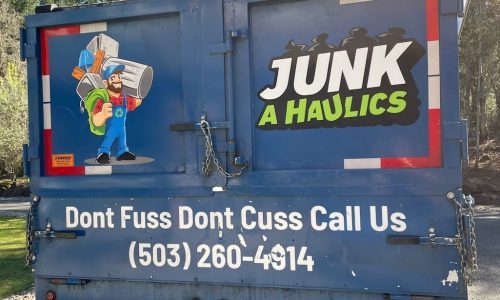When it comes to decluttering your home, disposing of hazardous junk items requires careful consideration and adherence to safety protocols. Hazardous materials, such as old batteries, paint cans, and chemicals, pose significant risks to both health and the environment if not handled correctly. Proper disposal is crucial to prevent harmful substances from contaminating soil and water sources, or causing accidents during handling. In this guide, we will explore the essential steps for safely disposing of hazardous junk items. From identifying common household hazards to finding local disposal facilities and understanding recycling programs, we will provide practical advice to ensure your cleanup efforts are both effective and eco-friendly. By following these guidelines, you can protect your family, your community, and the planet while efficiently managing your unwanted items.
Proper disposal of hazardous items is not just a matter of following regulations; it’s a fundamental practice for protecting human health, the environment, and community well-being. Hazardous items, which include everything from batteries and electronic waste to chemicals and pharmaceuticals, can have detrimental effects if not managed correctly. Understanding the importance of their proper disposal helps prevent harmful consequences and ensures a safer and healthier environment for everyone. Here are eight key reasons why proper disposal of hazardous items is crucial:

Hazardous items can contain toxic substances that pose serious health risks. For instance, improperly disposed of batteries can leak harmful chemicals such as lead or mercury, which can contaminate water supplies and soil. Exposure to these toxic substances can lead to a range of health issues, including respiratory problems, neurological damage, and cancer. Proper disposal ensures that these dangerous materials are managed in a way that minimizes exposure and health risks to humans.
Hazardous materials can significantly impact the environment if not disposed of properly. Chemicals, pesticides, and electronic waste (e-waste) can release pollutants into the air, water, and soil. For example, e-waste often contains heavy metals like cadmium and lead, which can leach into groundwater and soil, harming plants, animals, and entire ecosystems. By following proper disposal practices, we prevent these pollutants from causing long-term environmental damage.
Many hazardous items can contaminate soil and water sources if they are not handled correctly. Contaminated water can affect drinking supplies and aquatic life, while contaminated soil can affect agriculture and plant growth. Proper disposal practices, including using designated disposal facilities and recycling programs, help to manage and contain hazardous substances, reducing the risk of widespread contamination.
Proper disposal of hazardous items often involves recycling and resource recovery. For instance, many components of e-waste, such as metals and plastics, can be reclaimed and reused if processed correctly. This not only reduces the need for raw materials but also minimizes the environmental impact of mining and manufacturing new products. By ensuring hazardous items are disposed of properly, we contribute to a more sustainable and resource-efficient economy.
Improper disposal practices, such as illegal dumping, can lead to significant environmental and health risks. Hazardous items dumped in landfills or abandoned sites can leak toxins into the environment, creating hazardous conditions for nearby communities and wildlife. Proper disposal methods, including using authorized disposal facilities and participating in community disposal programs, help prevent illegal dumping and its associated risks.
Proper disposal of hazardous items is critical to maintaining environmental health and safety. Local disposal services and programs play a pivotal role in managing these materials effectively. By leveraging these resources, communities can ensure that hazardous waste is handled correctly, minimizing risks to public health and the environment. Understanding how to utilize these services and programs effectively can lead to better waste management practices and a cleaner, safer community. Here are eight ways to make the most of local disposal services and programs:
Many communities offer special Household Hazardous Waste (HHW) collection events, where residents can drop off items like paint, pesticides, and cleaning products. These events are usually held periodically and provide a convenient way for individuals to dispose of hazardous materials safely. Participating in these events ensures that hazardous items are collected and managed by professionals, reducing the risk of environmental contamination and health hazards.
Some local waste management programs offer curbside pickup services for hazardous waste. This service allows residents to place hazardous materials at the curb on designated days for collection by specialized waste disposal trucks. Using curbside pickup services simplifies the disposal process, making it easier for residents to manage hazardous waste without having to transport it themselves.
Electronic waste (e-waste) contains hazardous materials and requires special handling. Many local governments and organizations offer e-waste recycling programs where residents can drop off old electronics, such as computers, televisions, and batteries. These programs ensure that electronic devices are recycled properly, with hazardous components managed in an environmentally responsible manner.
Local disposal services often include designated drop-off locations for hazardous materials. These facilities are specifically equipped to handle and process hazardous waste safely. Residents can bring items such as expired medications, automotive fluids, and other dangerous materials to these locations for proper disposal. Utilizing these drop-off points helps prevent hazardous materials from ending up in landfills or being improperly disposed of.
Unused or expired medications can pose significant risks if not disposed of properly. Many communities have pharmaceutical take-back programs that offer designated drop-off sites or collection events for medications. These programs ensure that pharmaceuticals are disposed of in a way that prevents contamination of water sources and reduces the risk of accidental ingestion or misuse.
When dealing with hazardous waste, understanding the legal and environmental considerations is crucial. Proper disposal is not only a regulatory requirement but also an important factor in protecting our environment. Here are the key points to keep in mind:
Proper disposal of hazardous junk items is crucial for maintaining both environmental and personal safety. By following local guidelines, utilizing specialized disposal services, and educating yourself on safe practices, you can ensure that these items are handled responsibly. At JUNKAHAULICS, we prioritize the safe and efficient removal of hazardous materials, giving you peace of mind that your junk is being managed with the highest standards.
For assistance with hazardous waste disposal or any other junk removal needs, don’t hesitate to reach out to us. Contact JUNKAHAULICS in Raleigh at (910) 403-3616 or visit us at 4801 Glenwood Ave, Suite 200, Raleigh, NC 27612. Our expert team is ready to provide prompt, professional service tailored to your specific requirements.


JUNKAHAULICS